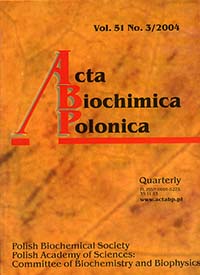HIF-1: the knowns and unknowns of hypoxia sensing.
Abstract
Hypoxia-inducible factor-1 (HIF-1) is a transcriptional activator that functions as a master regulator of cellular and systemic oxygen homeostasis. It consists of two constitutively produced subunits: HIF-1alpha and HIF-1beta. Under normoxic conditions HIF-1alpha undergoes hydroxylation at specific prolyl residues which leads to an immediate ubiquitination and subsequent proteasomal degradation of the alpha subunit. Additionally, hydroxylation of an asparaginyl residue blocks the transcriptional activity of HIF-1 due to inhibition of its interaction with co-activators. In contrast, under hypoxic conditions, abolition of prolyl hydroxylation results in HIF-1alpha stabilization, whereas the lack of asparaginyl hydroxylation allows the transcriptional activity. Additionally, the transcriptional activity may be modulated by phosphorylation or redox modification of HIF-1. Despite its name, HIF-1 is induced not only in response to reduced oxygen availability but also by other stimulants, such as nitric oxide, various growth factors, or direct inhibitors of prolyl and asparaginyl hydroxylases. Therefore, it seems to be a crucial transcription factor elicited by a wide range of stresses such as impaired oxygenation, inflammation, energy deprivation, or intensive proliferation. However, the mechanisms of normoxic activation, as well as of oxygen sensing, are not yet fully known. Further understanding of the processes that control HIF-1 activity will be crucial for the development of new diagnostic and therapeutic strategies.Acta Biochimica Polonica is an OpenAccess quarterly and publishes four issues a year. All contents are distributed under the Creative Commons Attribution-ShareAlike 4.0 International (CC BY 4.0) license. Everybody may use the content following terms: Attribution — You must give appropriate credit, provide a link to the license, and indicate if changes were made. You may do so in any reasonable manner, but not in any way that suggests the licensor endorses you or your use.
Copyright for all published papers © stays with the authors.
Copyright for the journal: © Polish Biochemical Society.


